|
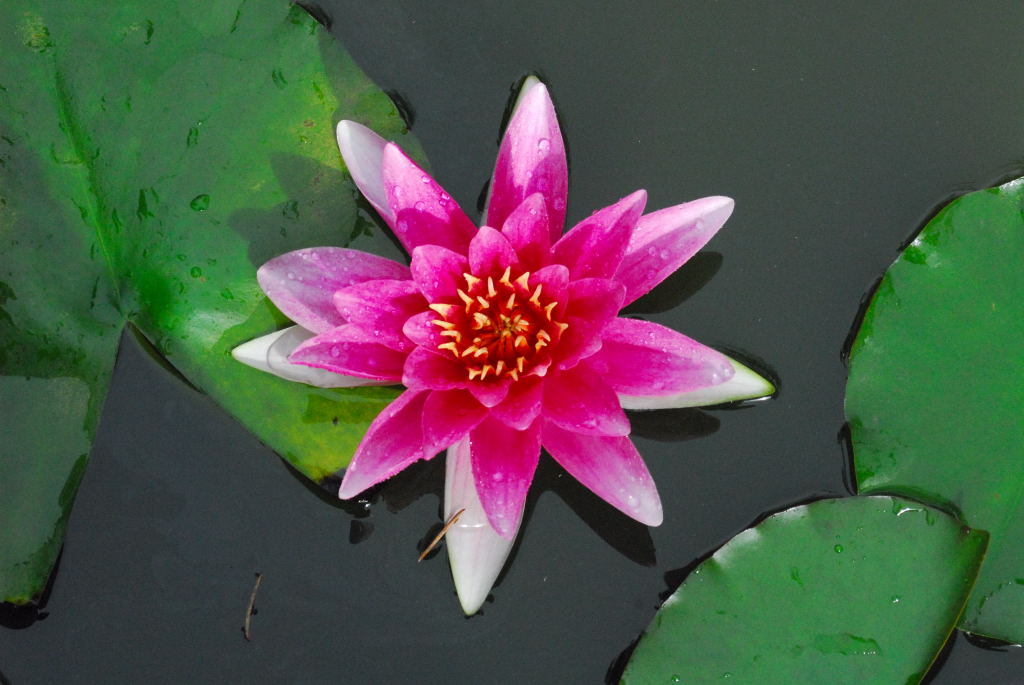 Nymphaea escarboucle Nymphaea escarboucle
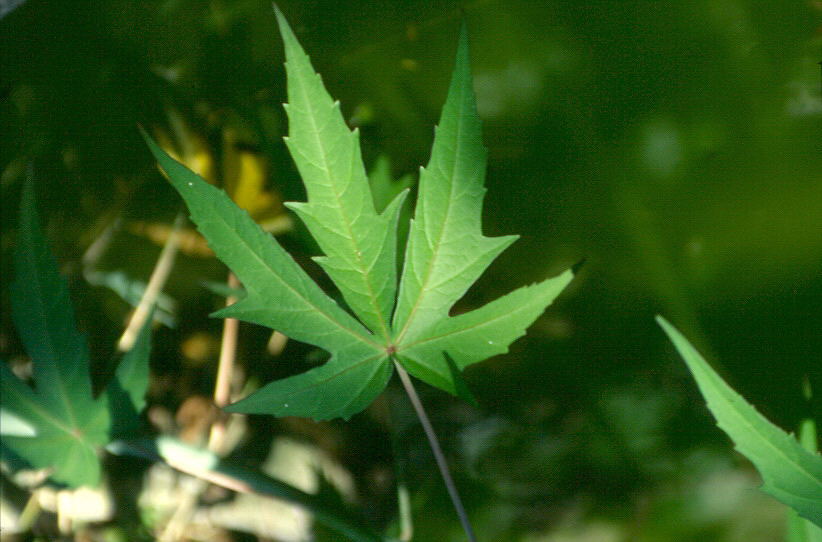 Hibiscus coccineus leaf Hibiscus coccineus leaf
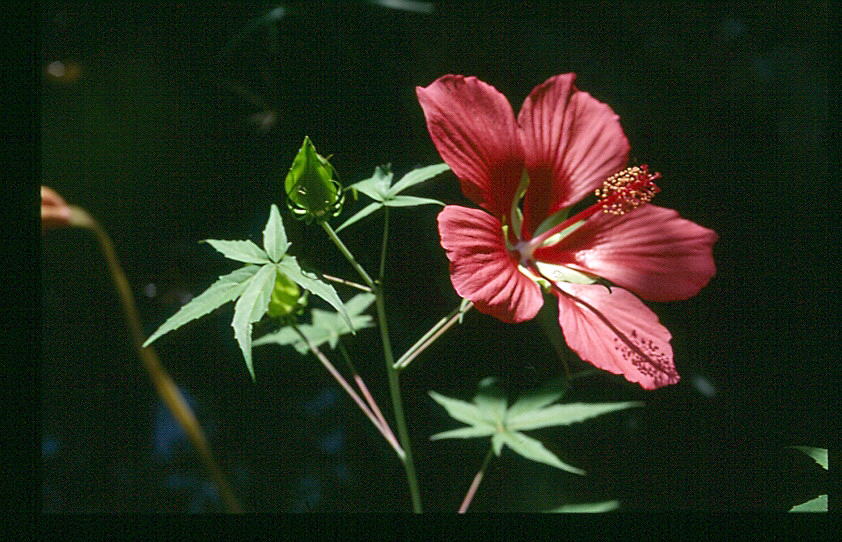 Hibiscus coccineus flower Hibiscus coccineus flower
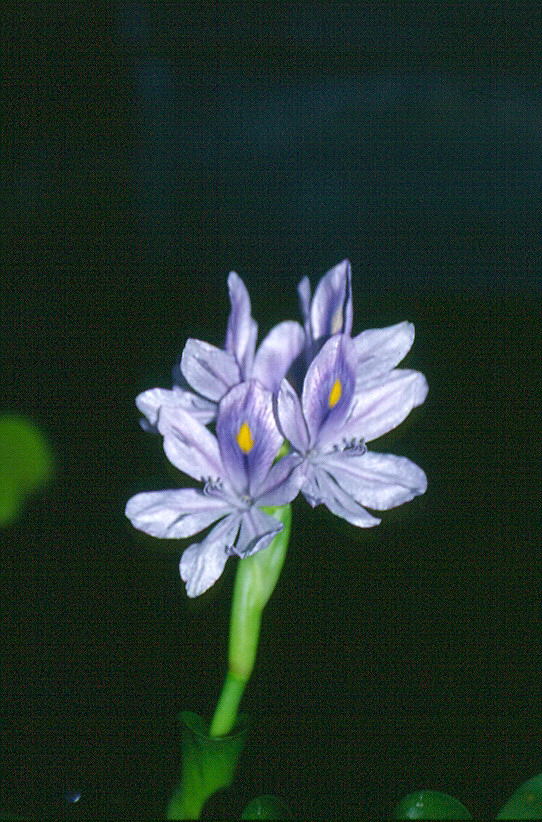 Eichornia crassipes flower Eichornia crassipes flower
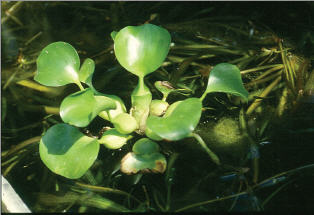 Eichornia crassipes Eichornia crassipes
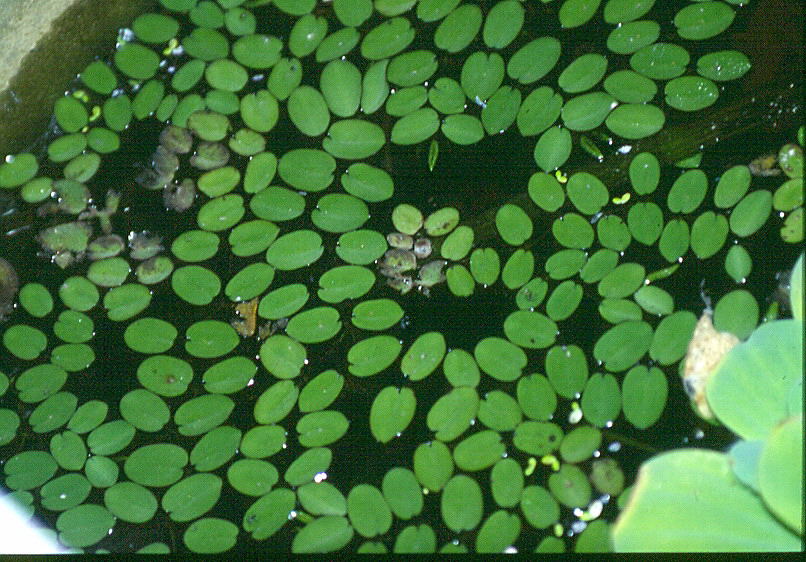 Salvinia auriculata Salvinia auriculata
|
Hedychium (Zingiberaceae) species originate from
Indiaand Southeast Asia. They havebeautiful sweet
smelling flowers like orchids, but don’t tolerate
temperatures below 7°C.Not really swamp plants, theyare
best settled on the banks in a rich soil. In the autumn
is important to cut off floriferous stalks. These plants
reproduce by stolons but you can also divide the
rhizome.
The genus Hibiscus (Malvaceae) contains
many species, but some, like H. syriacus, are too big
for a pond. H. moscheutus (= H. palustris) is obviously
the most suitable for a pond. Indigenous to the southern
United States it loves sunny places and will grow up to
2.5 meters in height. The flowers are pink with darker
inner part , they remain open only during one day but
are a lot so the plant is in full bloom during all
summer. Another good species is H. coccineus, also from
the southern USA. During the winter it needs protection
otherwise the leaves will die. This plant has amazing
buds that become beautiful big red flowers from July to
September. If you want to reproduce Hibiscus from seed
you can sow in the spring, but if you divide
matureplants in autumn you’ll have a delicious blossom
next June. Cultivate them in a mix of soil and sand.
Hosta lancifolia (Liliaceae) is a
perennial plant from China and Japan. This species is
appreciated for its decorative green leaves and though
it will do well in shady spots it needs good sunlight
for several hours per day if it is to bloom. You can
plant Hosta in fertil soil in March or October, from
June till September you’ll enjoy the graceful lilac
flowers. Hosta rarely produces seeds, so it is easier to
reproduce this plant by splitting mature plants. Plants
reared from seeds often do not look much like the parent
plant.
Houttuyinia cordata (Saururaceae) comes
from China and Japan and has very beautiful green leaves
with red or white edges. Unusually for bog plants,
Houttuyinia have a delicate scent that attracts
butterflies. In March or September you can plant this
species eight centimeters deep, laying horizontally the
rhizome, during the summer the flowers will bloom, but
if the season is warm we can have two flowering each
year. This plant will reproduce without problems; you
have only to wait! H. cordata can live in a shady corner
of the pond, but to maintain the red leaf edge it needs
strong but not direct sunlight.
Iris (Iridaceae). Hundreds are the
species and varieties of Iris, all the I. laevigata,
Iris pseudoacorus and I. kaempferi are suitable for
ponds where they live in 15 45 cm deep water. I.
kaempferi comes from China and Japan, is a strong plant
and during the winter can live in dry soil. The flowers,
white, violet, pink appear in June. The plant produces
many stolons but if you want to reproduce Iris by seeds
you have to waitApril. Remember: this plant doesn’t like
hard, alkaline water or earth and direct sunlight. Iris
can grow up to 80 cm and are perfect for pond borders,
planted in clumps.
Lysimachia nummularia (Primulaceae) This genus is found
across Europe, America and Asia, in bogs and along
inundated riverbanks. L. nummularia can live in any
position but needs sun to produce yellow flowers. The
leaves are rounded and lie on the water surface
in“branches” long up to 40 centimeters. Don’t submerge
Lysimachia, she lives well in very shallow water, at a
depth of 5-10 cm. From May to September the plants
bloom, and in September you can divide the pot contents
into new plants using soil mixed with sand.
Mentha aquatica (Labiatae) is a perfect addition to
every pond; you can cultivate this cosmopolitan plant
for years without problems. During harsh winters the
leaves die but the plant will spring into life once it
gets warmer. This plant prefers shady positions; if the
sun is too strong the leaves turn pale green. The little
white or lilac flowers bloom from May through to the end
of summer. One Mentha is settled in and thriving, you’ll
have new nice plants spreading into your pond without
any extra effort!
Mimulus ringens (Scrophulariaceae) lives
in North America and is a beautiful plant with small
violet flowers that thrives in shady positions and in
shallow water up to 10 cm deep. It can reach 50 cm in
height and is a good plant for covering the banks of the
pond. The hanging, light green leaves and the violet
flowers make an interesting contrast. If you plant your
Mimulus in September, by the next year you’ll have many
clumps of this plant that you can divide and move to new
locations. This is a rather robust plant: last year I
transplanted young Mimulus that were in flower during a
hot July (not recommended) and they continued producing
flowers and new leaves without any trouble!
Pontederia cordata (Pontederiaceae) is spread in the
temperate zones of North America. This high plant (up to
1 meter) is recommended for big ponds where it prefers
sunny places that are warm and either stagnant or feebly
flowing. You have to plant them at a depth of 20 cm
maximum in a rich soil. From June to September the soft,
downy buds will bloom. In April or May you can cut the
rhizome (always with a sharp knife to avoid mould and
rotting) and bury the portions in 6-7 cm
deep water. If the plant is happy it will alsoproduce
new plants as stolons, and these can be cut away and
replanted. Not a plant for ponds with freshwater
turtles: mine have eaten a 60 cm tall Pontederia in just
one day!
Sagittaria sagittifolia (Alismataceae) comes from Europe
but many other species of this genus live in America and
Asia. Above water, this plant has large and decorative
arrowshaped leaves (sagitta means “arrow” in Greek,
hence the name). Below the waterline the leaves are
different and rather ribbon-like. In June plant only
young specimens; large specimens tend to be disturbed by
the sun and wind. During the summer the plant blooms;
the male flowers don’t ripen at the same time with
female ones to avoid self-pollination. The stolons of
all species of Sagittaria carry small light-blue or
green tubers (regarded as eatable in Asia) in which the
plant stores reserves of nourishing matter for the cold
winter. To reproduce this species you can subdivide the
rhizome in March or cut off from the mother plant any
new daughter plants that form.And now is the turn of
floating plants, to be successful in their cultivation
we need warm air and water, stagnant water and rich soil
in the ground to release nourishing substances to the
floating roots. Remember: goldfishes and freshwater
turtles love small floating plants as meal.
Eichornia crassipes (Pontederiaceae)
originates from Central America but by now has infested
warm water in all the temperate world. In the wild
Eichornia creates floating islands that give harbour to
thousand of fishes (perfect plant for cichlid-lovers).
This plant can live also in very shallow water with the
roots in the ground. Rarely she produces seeds but new
plants grow during the summer when temperature reaches
25°C. If you haven’t success with Eichornia the main
problem is the poorness of the water.
Pistia stratiotes (Araceae) is diffused through the
temperate zones in all the world where the temperature
flows between 20° and 30°C. Loves sunny and shady places
but fears water drops on the leaves and poor water. If
the velvety nice leaves turn yellow iron is needed. In
the summer Pistia will produce new plants.
Salvinia auriculata (Salviniaceae) lives
in the Tropical America and absolutely wants sun, warm
air and fertil soil. If the light is enough the leaves
crowd together lifting their edge from the water as an
ear, hence th name auriculata. Salvinia reproduces by
spores. And now you have only to try and enjoy your
pond!
Back to Table Of Contents
|
